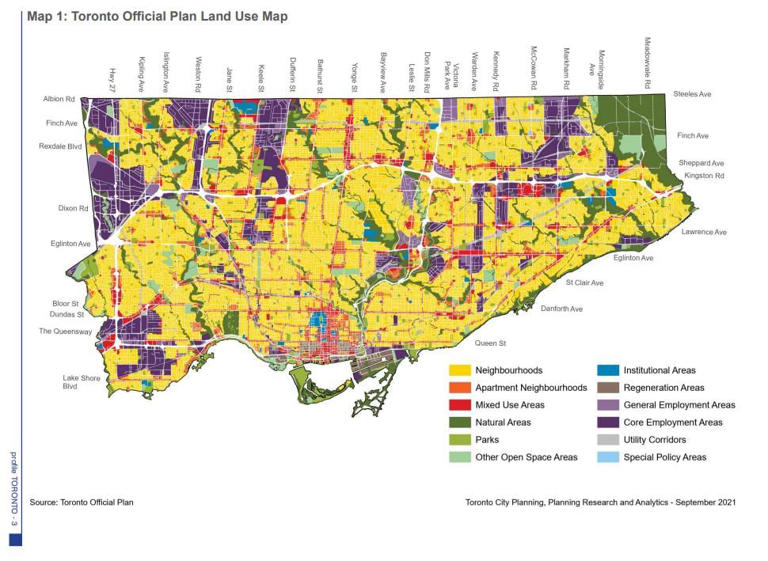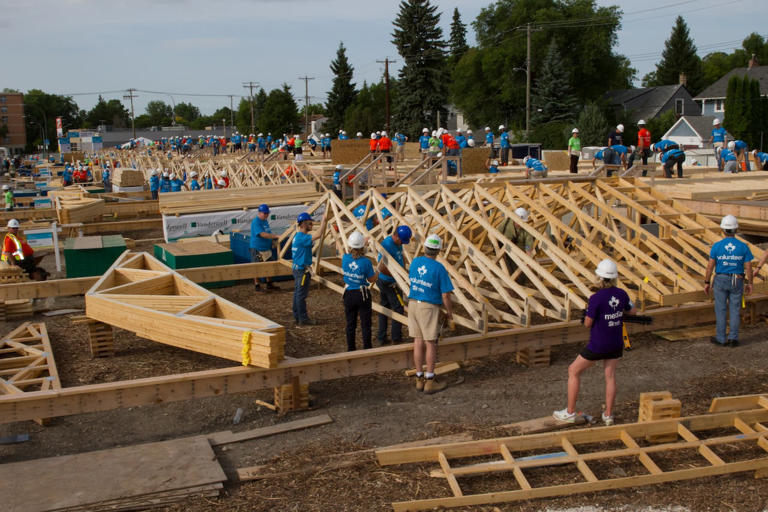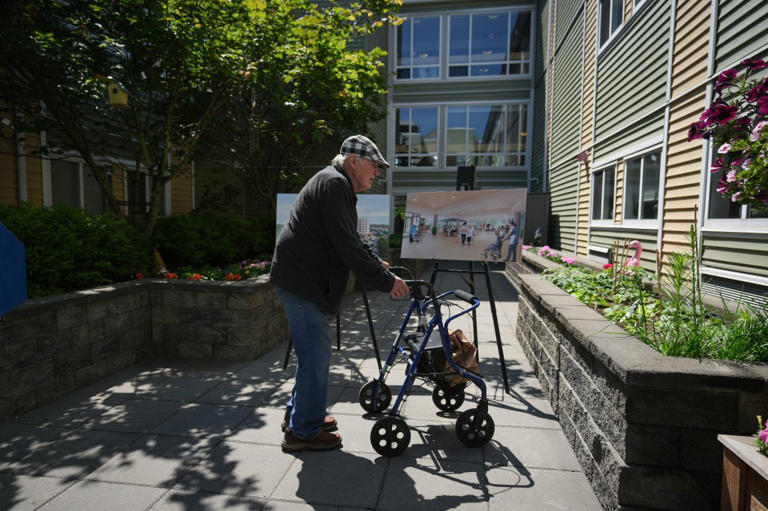Story by Richard Raycraft • CBC - Jul 18,2023
A House of Commons committee says blockchain could create "significant long-term economic and job creation opportunities in Canada" — but experts say Ottawa has a lot of work to do if it wants to seize the technology's potential and avoid possible drawbacks.
In a report last month, the House of Commons standing committee on industry and technology put forward 16 recommendations for the federal government on blockchain. The committee began hearings after it passed a motion last year saying blockchain has "vast potential to bring about innovation and efficiency gains in different industries such as financial services, health care, travel, entertainment, agriculture and many more sectors of our economy."
The committee recommends, among other things, that the government recognize blockchain as an emerging technology, establish a national blockchain strategy, "create a sandbox where entrepreneurs can test technologies unhindered by as yet unadopted regulations" and look into using blockchain in voting and supply chains.
The committee also recommended the government ensure that Canadians' rights are protected as the use of blockchain spreads.
"Witnesses told the Committee about the ways that blockchain technology is already changing the digital landscape and providing significant economic benefits, while also expressing optimism that greater opportunities using the technology lie ahead," the report said.
"Despite this promise, the blockchain industry is also facing many challenges."
What is blockchain?
A blockchain is a digital database or ledger that permits information to be shared securely. It's a network that permits every member, or node, to participate in maintaining and verifying the network.
This is done through cryptography and a verification system known as a consensus mechanism. The nature of blockchain means it can self-validate and secure itself from tampering without the need of an external authority or monitor.
"Nodes in a blockchain network are collectively responsible for maintaining the integrity of the information, creating a decentralized authority that promotes the secure recording and storage of information," the committee report said.
Cryptocurrencies like bitcoin rely on blockchain to authenticate transactions and value. Most blockchain networks — such as the bitcoin ledger — are public and open, meaning anyone can join as a node and participate, but other, more exclusive blockchain networks exist.
"If you're looking at it from the cryptocurrency lens, and you're seeing it from bitcoin's perspective, it's just a ledger of send-and-receive codes," said Koleya Karringten, executive director of the Canadian Blockchain Consortium.
"[It's] much like you would have seen balancing a chequebook back in the day, but a digital form of that. So it's an open, transparent database of records."
Non-fungible tokens (NFT) — digital artifacts such as images whose ownership can't be disputed or forged — also rely on blockchain.
While the most common use of blockchain right now is as a ledger for cryptocurrencies, the committee report said it could eventually see much wider use.
While committee witnesses said they couldn't give an estimate of the blockchain industry's value in Canada, Namir Anani, CEO of the Information and Communications Technology Council, told the committee the global value could be around $1.59 trillion by 2030.
Statistics Canada reports that just 0.3 per cent of Canadian business used blockchain in 2021, though its use increased substantially among medium-sized and large enterprises between 2019 and 2021
Karringten, who testified at the committee hearings, told committee members blockchain could be used to crack down on fraud in the pharmaceutical industry and build resiliency and transparency in Canada's food supply chains — which could, in turn, solve or prevent some international trade disputes.
'Enormous potential'
Victoria Lemieux, a professor of archival science at the University of British Columbia and co-lead of Blockchain@UBC, said blockchain would be a boon for Canada's international trade.
"I've seen that some of our major trading partners are investing and building infrastructure that leverages this technology," she said in an email.
"Support for investments in blockchain technology would have enormous potential for interoperability with these partners."
But while Lemieux said she supports many of the committee's recommendations, she fears Canada is lagging behind some of those partners on government blockchain policy.
"I see Canada as rapidly falling behind. We lack direction and clarity, as the report observes, and this is starting to be a hindrance to our progress, especially compared with many other nations that have blockchain strategies," she said,
"I've spent the past year on sabbatical based in Europe and have seen how the EU, Switzerland, and U.K. are all demonstrating much more commitment and support for this technology."

University British Columbia archival science professor Victoria Lemieux at her lab in April 2022. Lemieux said the EU, Switzerland and the U.K. are ahead of Canada on blockchain.
(Gian-Paolo Mendoza/CBC)
Karringten agrees that Canada is behind the U.K. on blockchain but added it's far ahead of its largest and most important training partner, the United States. Ethereum, the second most commonly traded cryptocurrency after bitcoin, was developed and created in Canada.
"Canada has come up with some of the best talent blockchain's seen globally," Karringten said.
"We're seeing U.K., EU, American companies starting to open up branches in Canada, so they're now seeing Canada as a market, but we need to do a much better job of getting our story out there."
Cryptocurrency mining has raised concerns about its energy use and possible contribution to climate change. B.C., Manitoba and Quebec have stopped granting new licences to crypto mining operations.
But Karringten said crypto mining could bring environmental benefits.
"The mining industry, if it came into Canada, could actually support building out the infrastructure and being early stage buyers of renewable energy, allowing the government to not have to put in the same level of subsidies needed to get these solar and wind farms off the ground," she said.
Blockchain roadblocks
But some concerns about the technology could hinder development of the blockchain industry in Canada. The committee noted in the report that the cryptocurrency exchange FTX collapsed during the hearings.
According to the RCMP, the Canadian Anti-Fraud Centre has received reports of cryptocurrency fraud losses totalling $75 million.
Karringten said education needs to be a focus going forward to prevent scams and poor decisions involving blockchain.
"Consumers need to make sure that they're doing their due diligence and their research if they're looking at this industry like an investment opportunity," she said.
One of the report's recommendations is to "establish a public awareness campaign, in consultation with the provinces and the industry, to educate the public about risks related to cryptocurrencies and the benefits of accessing cryptocurrency markets through regulated Canadian entities."
Lemeiux said governments will have to develop an approach that ensures emerging tech like blockchain respects people's rights, such as privacy rights, while avoiding overregulation.
"The concerns that keep me up at night are ensuring that the development of this technology progresses in a manner that supports human rights and democratic institutions," she said.
Karringten agrees that Canada is behind the U.K. on blockchain but added it's far ahead of its largest and most important training partner, the United States. Ethereum, the second most commonly traded cryptocurrency after bitcoin, was developed and created in Canada.
"Canada has come up with some of the best talent blockchain's seen globally," Karringten said.
"We're seeing U.K., EU, American companies starting to open up branches in Canada, so they're now seeing Canada as a market, but we need to do a much better job of getting our story out there."
Cryptocurrency mining has raised concerns about its energy use and possible contribution to climate change. B.C., Manitoba and Quebec have stopped granting new licences to crypto mining operations.
But Karringten said crypto mining could bring environmental benefits.
"The mining industry, if it came into Canada, could actually support building out the infrastructure and being early stage buyers of renewable energy, allowing the government to not have to put in the same level of subsidies needed to get these solar and wind farms off the ground," she said.
Blockchain roadblocks
But some concerns about the technology could hinder development of the blockchain industry in Canada. The committee noted in the report that the cryptocurrency exchange FTX collapsed during the hearings.
According to the RCMP, the Canadian Anti-Fraud Centre has received reports of cryptocurrency fraud losses totalling $75 million.
Karringten said education needs to be a focus going forward to prevent scams and poor decisions involving blockchain.
"Consumers need to make sure that they're doing their due diligence and their research if they're looking at this industry like an investment opportunity," she said.
One of the report's recommendations is to "establish a public awareness campaign, in consultation with the provinces and the industry, to educate the public about risks related to cryptocurrencies and the benefits of accessing cryptocurrency markets through regulated Canadian entities."
Lemeiux said governments will have to develop an approach that ensures emerging tech like blockchain respects people's rights, such as privacy rights, while avoiding overregulation.
"The concerns that keep me up at night are ensuring that the development of this technology progresses in a manner that supports human rights and democratic institutions," she said.














